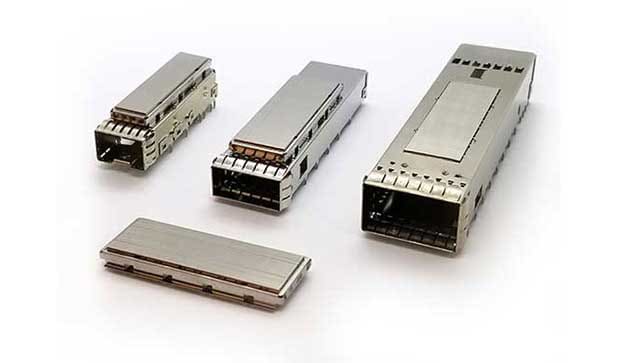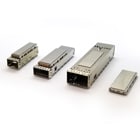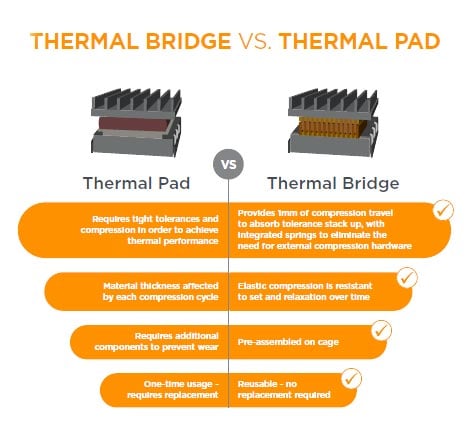
Superior Thermal Performance and Durability
Our innovative thermal bridge technology provides up to 2x better thermal resistance over traditional thermal technologies such as gap pads or thermal pads. This solution was developed as customers seek ways to dissipate more heat associated with increasing system power requirements, specifically in fixed cooling applications with restricted airflow, liquid cooling or cold plates.
Featured Product
Thermal Bridge I/O Products
TE Connectivity’s (TE) thermal bridge product portfolio provides up to 2x better thermal resistance over traditional thermal technologies such as gap pads or thermal pads. This solution s was developed as customers seek ways to dissipate more heat associated with increasing system requirements, specifically in fixed cooling applications with restricted airflow, liquid cooling or cold plates.
Thermal Bridge Technology receives Leadership in Engineering Achievement Award

TE Connectivity’s Thermal Bridge product is a Bronze award winner in the Connectivity category of WTWH Media’s 2020 LEAP (Leadership in Engineering Achievement Program) Awards. The LEAP Awards celebrate the most innovative and forward-thinking products serving the design engineering space, showcasing global electronic engineering achievements in 12 categories. This year’s winners were chosen by an independent judging panel of 14 engineering and academic professionals, and entries were submitted from around the globe. WTWH publications participating in the program included Design World, Fluid Power World, Fastener Engineering, and EE World.
-
2020 LEAP Awards Winners List
See the full list of winners for the 2020 LEAP awards.

Product Features
- Spring loaded bridge offers 1.0mm (typical) of z-axis compression
- Individual plate actuation allows for surface conformability in the x-axis
- Dual-spring design allows for tilt conformability in the y-axis
- At 3 points of contact per plate, a typical bridge will have 150+ points of contact to adjacent surface
- Dry interface resistance 20-40% lower than most traditional riding heatsinks
- Thermal Resistance: ~ 0.7 to 1.7 cm2°C/W
Product Benefits
- Up to 2x better thermal resistance over most traditional thermal technologies
- Near-zero plate gap in the thermal bridge construction for optimized compression and thermal transfer
- Optimized for application using cold plate with liquid cooling or heat pipes, ganged heatsinks or direction chassis conduction applications with little to no airflow
- Consistant, long-lasting thermal perfoamnce with an elastic compression design that is resistant to set and relaxation over time
- Low and consistant compression force between cold plate and I/O plug/chipsets
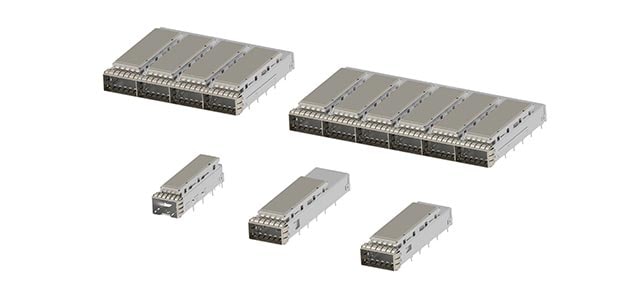
How the Thermal Bridge Technology Works
Our new, innovative thermal bridge technology replaces the traditional gap pad or thermal interface material (TIM) with integrated mechanical springs to provide interface force and 1.0mm of compression travel. This interleaved series of parallel plates allows heat to pass from the I/O module to the cooling area.
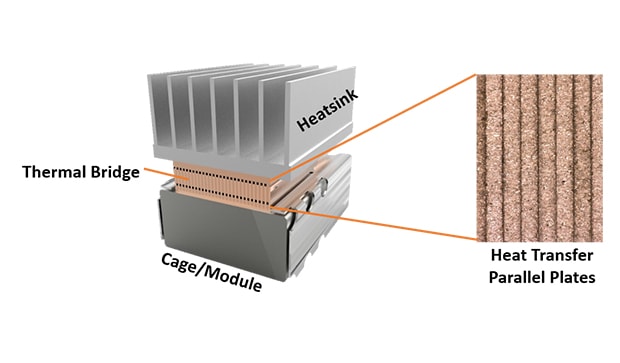
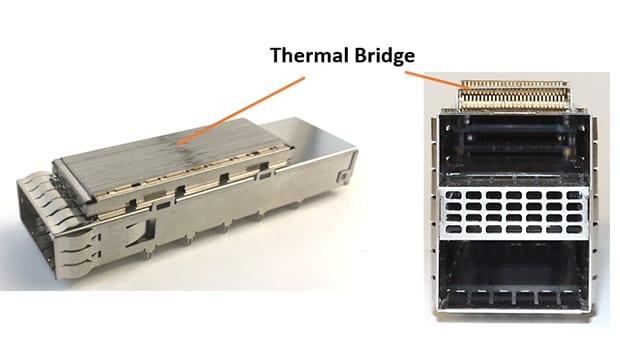
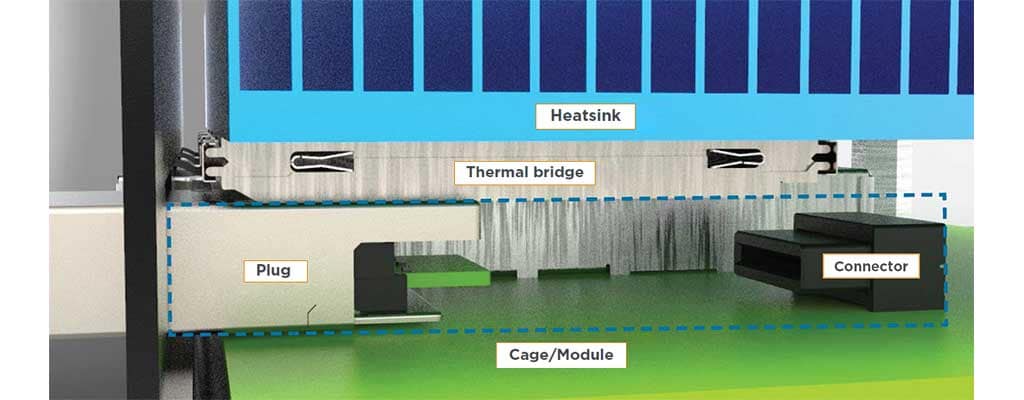
Select Applications
Thermal Bridge
Frequently Asked Questions (FAQs)
Q: What are the best applications for using thermal bridge technology?
A: This solution was developed to dissipate heat in applications that use cold plates with liquid cooling or heat pipes, ganged heatsinks or direct chassis conduction applications with little to no airflow. It is a mechanical alternative to the traditional gap pad or thermal interface material (TIM).
Q: How does the thermal bridge work with fixed heat sink and cooling applications?
A: The thermal bridge solution is optimized for applications where the heat sink or cold plate is at a fixed location. For these types of applications, normally TIMs or gap pads are used and require a high level of compression to bring the thermal resistance down. These TIMs and gap pads tend to relax or set over time, decreasing the performance. TE’s thermal bridge technology replaces the gap pad in these applications with a mechanical, compressible gap pad, providing low-compression force and low thermal resistance, making this solution more reliable over time.
